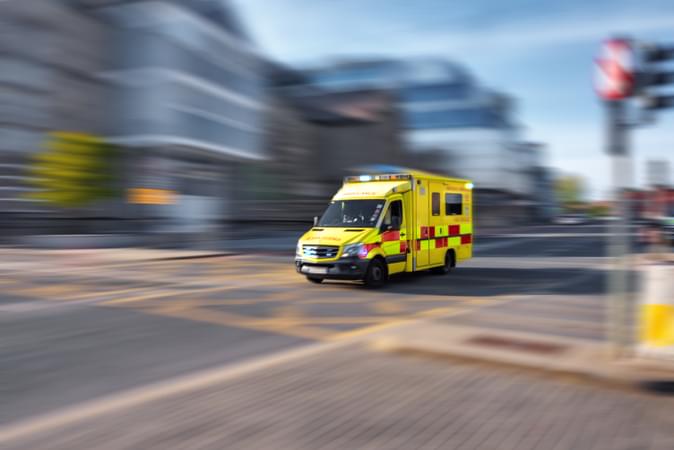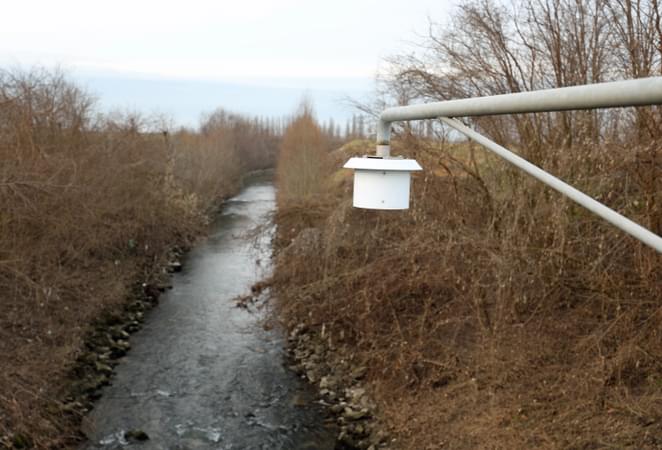Facing several pressing challenges, including financial limitations, staff shortages and growing environmental concerns, emergency response organisations are increasingly looking to digital solutions to ensure they can continue to provide required services. Emergency response technology often enables organisations to do more with less, helping them optimise resource use and reduce costs while also improving performance.
Though AI-driven emergency response technology and devices like drones and unmanned vehicles typically attract the most attention, many digital solutions seek to improve the infrastructure, systems and processes that underpin emergency response. These solutions can have just as profound an impact on emergency response performance.
This article explores eight emergency response technologies that will have a significant impact in 2024, examining what they can achieve and how they benefit emergency response organisations.
Our top emergency response technologies in 2024
From advanced simulation tools to IoT devices, our list of smart emergency response systems and solutions encompasses a broad array of technologies.
1. Modelling tools
All healthcare systems and organisations face financial challenges and are under pressure to do more with less. Whether operating in a national healthcare system or as a private sector provider, there is always a pressing need to optimise resource allocation and maximise the value derived from assets.
Consequently, data-driven modelling solutions will be increasingly important in strategic planning and operational management. The ability to model outcomes based on a complex array of inputs enables organisations to refine how they utilise resources and adopt a more data-based approach. From identifying the optimal location for ambulance bases to analysing the effect of paramedic shift patterns on response times, modelling tools are remarkably versatile and enable organisations to justify their decision-making with statistical evidence.
Omda Readiness is an excellent example. Utilised by emergency responders in New Zealand, the UK and North America, this industry-leading simulation software empowers emergency response organisations by enabling them to model the outcomes of diverse operational and strategic decisions. The software is increasingly essential in service funding as well as ensuring optimal resource allocation and distribution. By modelling various scenarios and determining what assets are required to meet service targets, organisations can provide a data-based justification for the funding they need. Backed by statistics and advanced modelling capabilities, emergency response organisations benefit from a stronger position when requesting resources or negotiating funding arrangements.

2. Comprehensive incident management solutions
Digital solutions that connect and cover every aspect of incident management will also become more prevalent in 2024. Improved connectivity and communication result in greater operational oversight, more informed decision-making and, ultimately, quicker and more accurate responses. They also enable superior real-time management of incidents as they evolve.
Previously, organisations have utilised several emergency response technologies to achieve operational oversight, process and triage incoming incidents, communicate with assets and personnel, and distribute resources. This is unwieldy, complex and slow. Modern solutions aim to unite these functionalities in a single solution.
By integrating communication infrastructure, operational awareness, incident handling and dispatch support into one incident management solution, we facilitate greater coordination between the various elements of emergency response. All involved share a common understanding of the incident and benefit from streamlined workflows that enable emergency responders to work more quickly, efficiently and safely.
Some of these solutions will also begin incorporating emerging technologies like AI-powered voice-to-text transcription. This is the foundation on which many valuable functionalities can be built. From quicker information processing and streamlined handling processes for call takers to real-time decision assistance and multilingual support, voice-to-text will have a significant impact on emergency response capabilities. For an example of how comprehensive incident management technologies improve emergency response, head to the Omda Incident solution page.
3. AI-driven dispatch prioritisation
From simulation tools to monitoring the growth of wildfires, AI contributes to a wide variety of emergency response technologies. Dispatch prioritisation is one of the critical areas in which it is having a sizable impact. New AI-driven solutions are being developed and implemented by forward-thinking emergency response organisations looking to reduce call miscategorisations and optimise resource allocation.
In many emergency response systems, dispatchers receive no medical training but process complex calls that would often benefit from it. Under pressure, dispatchers are more likely to over-categorise calls, resulting in the dispatch of resources that are not required. This is a concern for emergency response organisations contending with a scarcity of resources. However, correct categorisation requires organisations to walk a fine line, as under-categorisation can negatively affect patient safety.
In this context, AI dispatch prioritisation tools can assist dispatchers in making the correct decision. Leveraging historical data and assessing various incident variables, the technology provides statistical guidance on categorising calls and flags those calls it believes are miscategorised. Rather than automating dispatch, these solutions augment and support human dispatchers, assisting them in decision-making and ensuring the human element retains the final say over dispatch.
AI-assisted dispatch technology has the potential to drastically improve dispatch accuracy, enabling organisations to make better use of their resources. To learn more about this emergency response technology, take a look at our article on the role Omda has played in developing a pioneering dispatch solution alongside Valencia Emergency Medical Service (EMS) and experts at the Technical University of Valencia.

4. Case analysis tools
Emergency response organisations are more and more aware of the power of data to shape and improve incident response and the service they deliver. These organisations generate significant quantities of data but, traditionally, have not had access to the analytics and performance review technologies required to leverage that information.
Over the coming year, performance analysis solutions that enable organisations to replay specific incidents, interpret data in compelling and comprehensible formats and analyse short and long-term performance will improve access to actionable intelligence that encourages quick, data-driven changes to policy, procedure and processes. The recent collaboration between Omda and Region Värmland in Sweden demonstrates how emergency response organisations can use new tools to leverage existing data.
This is a much more radical transformation than it may initially seem. Operational responses were historically conditioned by best practices with little statistical foundation. Changes to the accepted way of doing things also depended on protracted performance reviews. The unprecedented insight into performance provided by advanced analytics tools enables emergency response organisations to become more agile and adopt an always-evolving process in which incremental adjustments help to optimise responses with each new incident.
5. Incorporation of Internet of Things (IoT) technologies
As we integrate digital technologies into a growing number of products and devices, our ability to collect and leverage data from new sources increases. Taking advantage of the Internet of Things and improved connectivity will be crucial in the emergency response sector in 2024.
IoT technologies assist emergency responders in two main ways. First, they facilitate a quicker response. In some cases, this may even translate into an advanced warning. Second, they enable a more accurate and informed response. They achieve this without the need for additional manpower, resulting in significant savings.
Two examples illustrate the power of IoT devices. More car manufacturers are integrating IoT capabilities into their vehicles, allowing them to automatically connect to emergency services in the event of an accident. The cars can immediately share location data should an incident occur, alerting emergency services and enabling a quicker response. In some cases, especially those where there are no witnesses, this could drastically improve response times and save lives.
Our second example pertains to natural disasters. Emergency response organisations are beginning to rely on strategically positioned IoT sensors to promptly identify issues with flooding, fires and even air quality. Recognising these natural disasters at an earlier stage means emergency responders are better positioned to implement appropriate countermeasures and minimise damage and loss of life. Earlier action also tends to reduce the resources required to respond to incidents, lowering costs.

6. Drone devices and unmanned vehicles
In recent years, we have seen a proliferation of drone technology, and high-quality devices are widely accessible. They are also becoming essential tools in emergency response organisations, where they help to improve situational awareness, provide data that assists in strategic decision-making, locate individuals at risk, or deliver supplies to those in need.
While drones improve emergency responders’ ability to assist the public, they also protect emergency responders. They can carry out tasks that previously would have required human intervention and may have put personnel at risk. The superior oversight they provide to those responsible for managing incidents also helps them make informed decisions that reduce risk to emergency service employees.
In 2024, emergency responders will likely increase their use of drones and other uncrewed vehicles, finding innovative ways to deploy and utilise them. The ability to fit these devices with various technologies makes them highly versatile and enables organisations to equip them for specialist applications at a relatively low cost. Learn more about drone emergency response technology in this article.
7. Accessible iterations for smaller teams
In 2024, we expect emergency response solutions to become more specialised and adaptable, making them better suited to emergency response organisations with diverse operational needs. Previous technological projects have demonstrated that one-size-fits-all solutions have significant drawbacks, as they do not allow for a user-focused design based on context-specific requirements.
For instance, emergency response organisations that cover a large geographical area are often responsible for both densely populated metropolitan regions and rural zones with much lower population densities. The contrast between the two is considerable, and there are significant differences in resource availability and operational needs. While the central emergency response organisation and larger cities require highly advanced digital solutions, the cost, complexity, hardware, and training they necessitate may not make them a practical option for smaller teams and departments.
Stripped-back, targeted solutions that take appropriate features from these advanced solutions and make them accessible to smaller teams are one solution to this problem. They are an excellent way to deliver the benefits of digital technology at a lower cost while also minimising the potential drawbacks of implementing complex solutions in smaller environments. Over the coming year, we expect to see these context-specific solutions proliferate. For an excellent example of how this works in practice, take a look at our article on Police Tool 2.0, which transitions select Omda Incident (CoordCom) functionality to a web client-based platform for police departments working with Valencia 112.
8. Multimedia emergency communication capture
Traditionally, emergency response communication with the general public occurred via voice-based telephony channels. However, this has clear limitations. First and foremost, the quality of the information depends on the caller’s ability to accurately describe the incident and its impact over the phone.
In 2024, we expect to see emergency response technologies move beyond voice-only technologies to incorporate a wider range of mediums, including video, photos, location data and real-time text. This should improve the quality of information available to call handlers and emergency responders.
Video and photo technologies illustrate the most immediate benefits of solutions that can move beyond voice-only calls. They provide additional depth and detail, may enable dispatchers to identify issues that those making the call are unaware of, and can be utilised across the response chain. For instance, photos and videos could assist dispatchers in assessing an incident and dispatching the correct emergency resources. At the same time, doctors and healthcare professionals at the relevant treatment facility could use the photos and videos to make earlier interventions that improve healthcare outcomes and patient safety.
Emergency response technology and Omda
At Omda, we believe emergency response technologies must be highly specialised, user-focused and reliable. We offer a complete suite of emergency solutions, enabling us to assist organisations with any and all aspects of emergency response. From using Omda’s solutions to model complex scenarios and aid long-term strategic planning, to leveraging our advanced analytics capabilities to assess performance and make adjustments, we aim to provide end-to-end coverage for the emergency response sector.
Having accrued extensive experience in emergency response, we work closely with our customers to develop and implement solutions that are tailored to specific operational requirements. Our solutions grow and adapt to evolving emergency response needs, ensuring their long-term relevance and enabling organisations to invest in technology that reflects their reality and helps them overcome today’s challenges.
To learn more about Omda emergency response technology, visit the Omda Emergency solutions page. You will find more detailed information on our systems and several customer case studies there.
